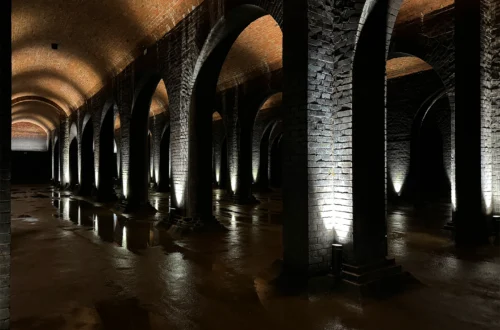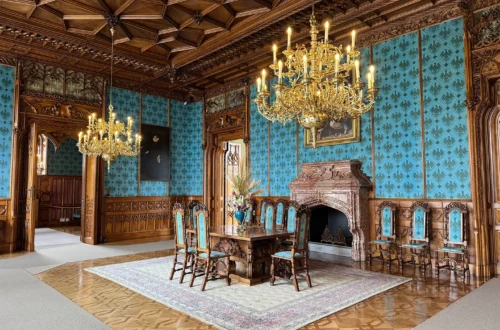
Visiting Bitov Castle – Czech Republic
It’s not the biggest, nor the prettiest castle, but visiting Bitov Castle it was one of my favourite days in the Czech Republic so far. A place that has gone through so many hands over it’s existence, who has seen the country change rulers more often than I have been decades alive and last but not least a castle that shows that humans have always been like that, from the beginning of time.
History of Bitov Castle
TLDR: Click here to jump to the tour
Bitov Castle is one of the oldest still standing castles in the Czech Republic. Earliest records of a fortification in the spot the Bitov Castle you can visit today are from 1060, as a wooden fort between the two rivers Zeletavka and Dyje. During the 12th century it was upgraded to a stone-walled fortification and after 1298 into a castle under the reign of the Lichtenburgs. This family held the castle until 1572 when the last male heir with the family name died. Their remains are buried in the castles chapel.
The next remodel of the castle happened after 1612 when the Moravian family of Jankovsky of Vlasim had it redone in the style of Early European Baroque. In 1755 the castle fell to the Counts of Daun who were subjects of the Habsburgs.
Eventually Bitov Castle was remodelled again in the 1800s into the neo-Gothic style it still has today. The last family who owned the castle were the Haas of Hasenfels, owners of the West Bohemian porcelain factories (which were producing porcelain until 2011). During their ownership the castle grounds were turned into one of the largest private zoos in the country. Some of that zoo can still be seen today, although of course no tigers live here anymore.
Today the estate is managed by the National Heritage Institute and since 1970s more than 80 million CZK have been spent on its renovation. Although the tours they offer are only in Czech they had the most comprehensive selection of languages available in printed versions.
While it seems today like the castle is located a little weirdly, away from the village of Bitov, it hasn’t always been this way. Until 1935 the village of Bitov was directly beneath the castle, but it was flooded when the Vranov reservoir was finished, leaving only the castle behind.



Visiting Bitov Castle – Guided Tour
TLDR: Click here to jump to the FAQ about visiting Bitov Castle
The tour starts in the yard of the fortification, then immediately enters the inner courtyard, followed by the knights hall. Inside this hall are two knight statues, one of which depicting castle patron St. George subduing a dragon. More imposingly the hall also features a lifesize stuffed knight in armour on a stuffed horse. The walls and ceiling of this hall are painted in a 3D manner, making it look like the walls are dressed in stone, adorned with wood carvings and topped by stucco, instead of the plain plaster they actually are. The single-tier chandelier, made from wrought tin, is made to look like it’s covered in flowers and greenery.


After the former chapel, then hall of ancestors you enter a bedroom. It has an adorned sleeping area, as well as a praying area in front of the window. From this bedroom a row of curtain-covered-arches lead into the next rooms.
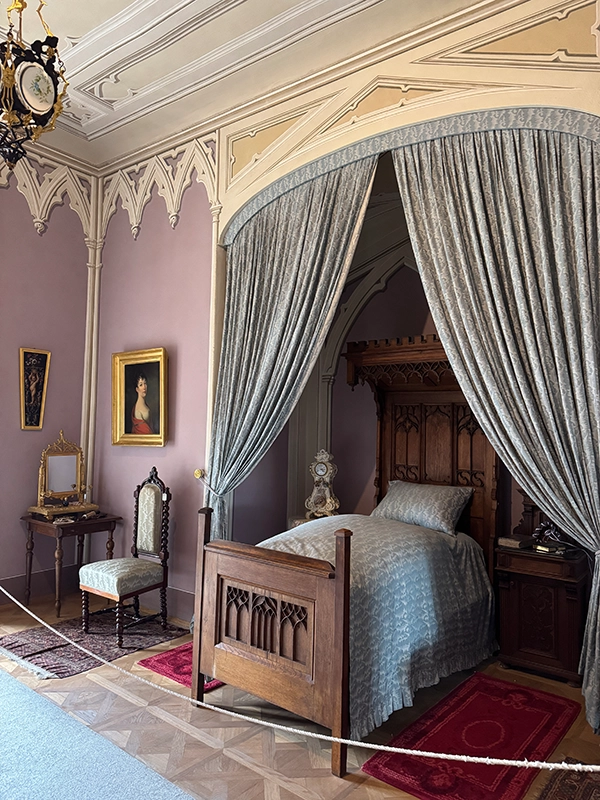
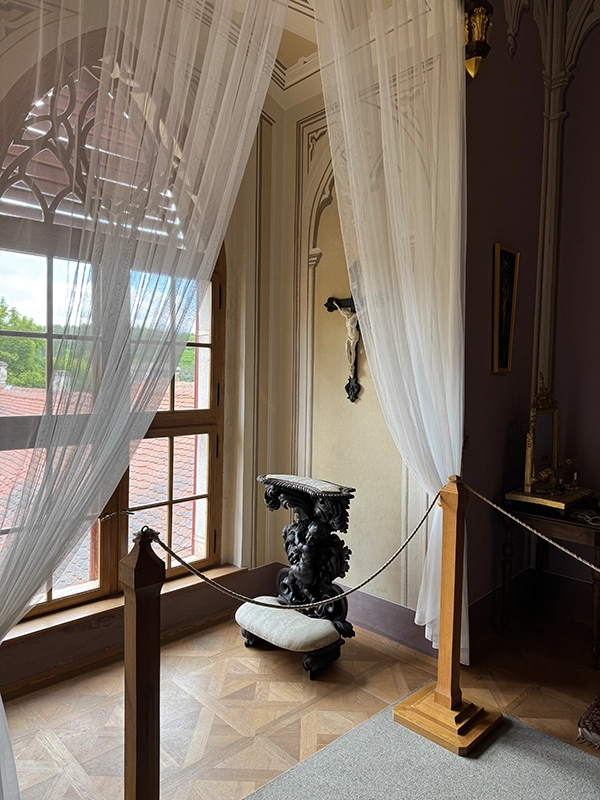

First into the dining room of the family. The carvings on the seats are supposed to emulate ivory carvings, a status symbol for the Neo-Gothic style of the 10th century. The table as you can see it today has been set with porcelain tableware which was produced by the Haas & Czjzek company.
The next room was the smokers lounge where the men met, drank and smoked. In the corner a shelf displays products from the porcelain factory in Slavkov near Karlovy Vary, where the money came from they used to buy this castle.
From the lounge you enter the music room, a small, but well equipped space which served as private entertainment, or as the stage for festivities in the adjacent ballroom. The ballroom is again covered in paintings, making it look like the walls and ceiling are more richly decorated than they were.
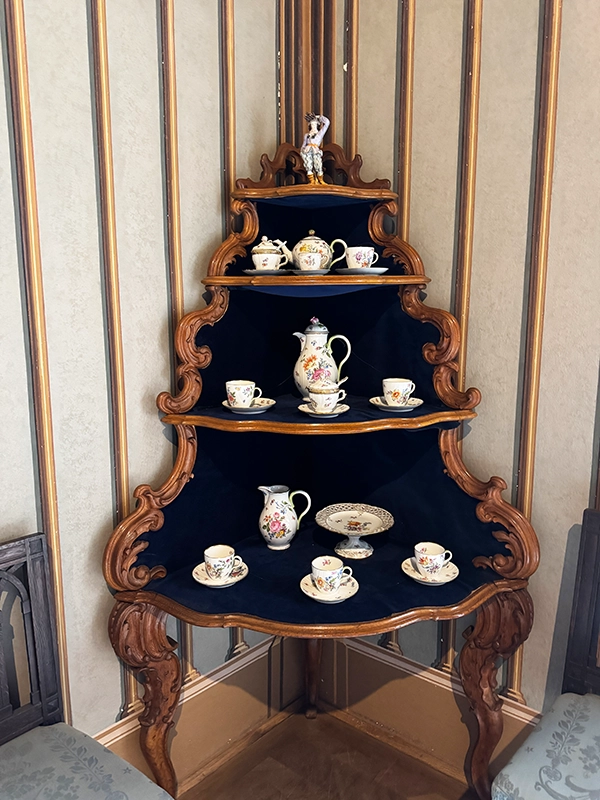


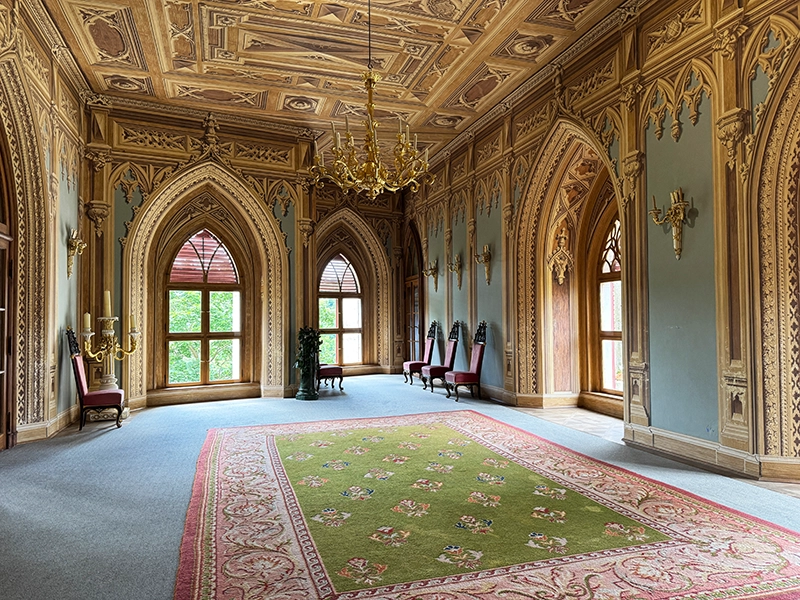
One of my favourite spaces in the castle was the ladies violet lounge, not because of the violet walls or the Empire style furniture, but because of the Siberian malachite tableware displayed on a sideboard, which had been a gift from Tsar Alexander I of Russia. It was allegedly inspired by Pompeii and the art of ancient Egypt. Talk about international!
Behind the ladies lounge is the gentlemens green lounge, because the men needed more space – there will be a third lounge, later. The pictures on the wall behind the table are of the grandparents of Baron Jitt Haas – August Haas with his wife. On another wall is an embroidered coat of arms of the Haas family and a painting of the porcélain factory Haas & Czjzek in Slaykov near Karlovy Vary, which is also painted on porcelain.
The balcony can be accessed from the green lounge and overlooks the convergence of the rivers Dyje and Zeletavka which flow around the castle. Even today only a few houses can be seen along the riverbed, everything else is just forest as far as you can see.

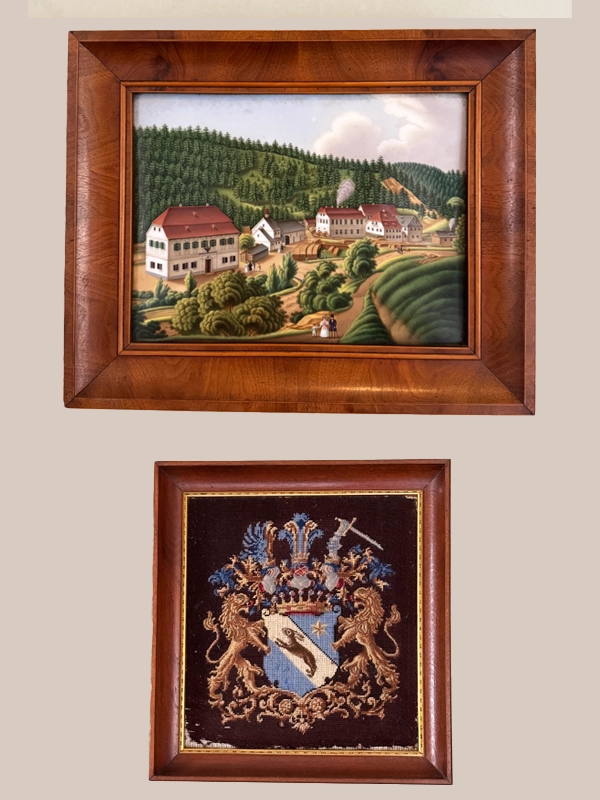
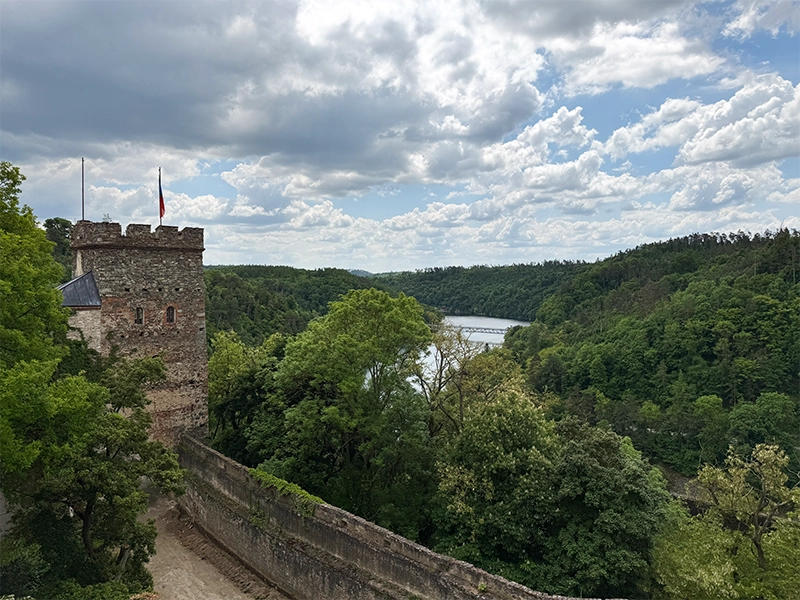
Next was the first hunting lounge (I did say there would be a third lounge later that was mainly or exclusively reserved for the men of the family). Its walls, lamps and even tables are covered with hunting trophies like animal skulls and antlers.
The next bedroom was used by Franz Daun as a master bedroom. It was eventually converted into a guest-room. The room is painted intricately again, features a bed, a free standing fireplace made from graphite and the skin of a lioness turned into the carpet…
After this room was another hunting lounge, this time, in addition to the walls, lamps and tables being covered with hunting trophies, there were also personalised hunting rifles from the different owners of this castle.

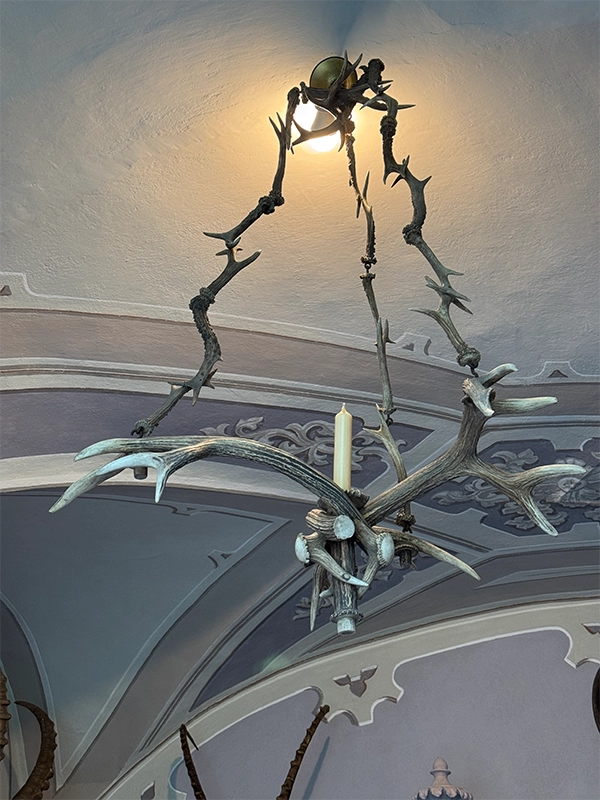

Another favourite room of mine in the castle was the study of Franz Daun. Above the table by the window are military deeds of the Daun family – like of the Commander Filip Lorenz Daun and Bishop Josef Albin Franze Daun from Salzburg and Passau, as well as a medal the field marshal Leopold Josef Daun got. The deed for one of the Dauns to become an Ehrenbürger (honoured citizen) of the township Vöttau (Bitov) on the wall opposite the desk is in German.


After all these normal (for a castle) rooms followed many, many rooms that make you think “wait… what?”: Starting with a library and mineral and butterfly collection room. Those aren’t odd in themselves, you often see collections in the houses of rich people, because they can afford it, but it is the start of a whole floor of curios.
Next comes the picture gallery of the Daun family, which was mostly kept intact even by the Haas family. Again, normal. Most “noble” families have galleries of themselves and their family heritage. Gotta justify their status somehow.
But then! The taxidermy rooms start. Bitov has become somewhat famous for them and for good reason. The first few were amassed by the Daun brothers Vladimir and Otakar during the 19th century, who studied natural sciences and zoology and travelled all over the world – bringing home mainly birds, but also other “hunting trophies” like young alligators, turtle and ostrich eggs, as well as the skulls of lions, zebras and wild goats.
Among the birds exhibited here in taxidermied form are:
- vulture
- golden eagle
- hummingbirds (tiniest of birds from South American rainforests)
- birds-of-paradise (also from the rainforest, often used to decorate hats and hairstyles)
- Quetzal (a sacred bird whose feathers were used for rituals and decorated the headdresses of Aztec rulers)
Then you get to the third taxidermy room and I promise you, you haven’t seen anything like it anywhere. 49 stuffed dogs are spread out over the floor, the largest collections of its kind in the world. It was put together by Baron Jit Haas from his favourite animals. All of them belonged to him and were tended to by the staff of the castle. There is a Great Dane, a Saint Bernard, a Dachshund, a Setter, a Boxer, and many, many others others. Even a Stable Pinscher is included in the exhibitions, which is almost extinct today. However, these were not all of the Barons dogs, the ones that he hadn’t stuffed were buried at the dog’s cemetery in a clearing next to the gates.
This love for animals (he also had a zoo with more exotic animals, I mention it later) made the Baron a disliked figure of the local nobility. Since he was not welcome in their inner circles he retreated into his castle and into the company of animals even more. He also found a unique way to mock them in return: He dressed up stuffed cats and squirrels in human clothes, supposedly to look like the people who mocked him.
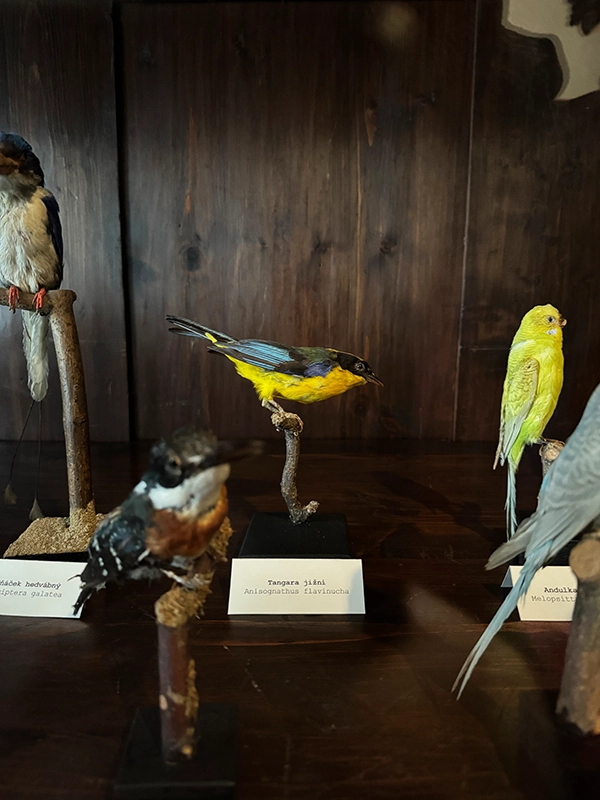

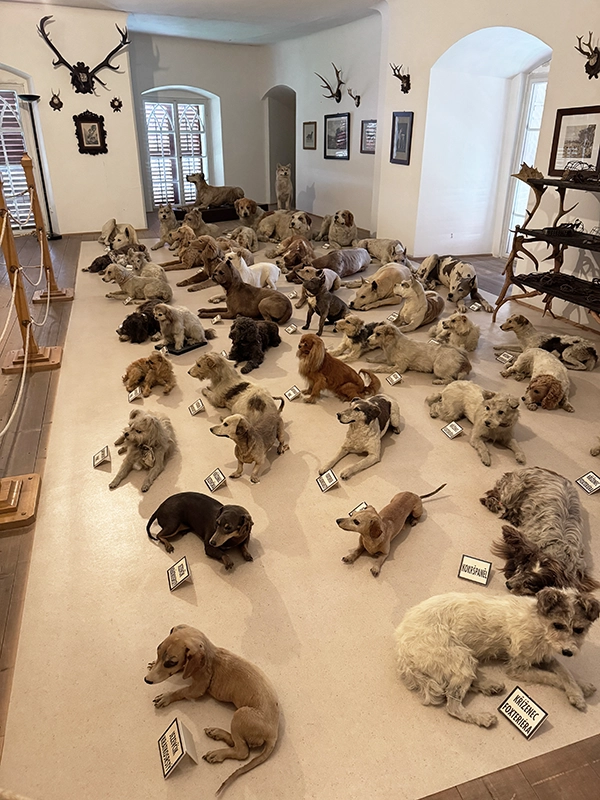
The last two rooms in the castle tour were the dog kitchen and the main kitchen. The dogs kitchen was used, as the name suggests, to prepare food for the all the estates animals, but especially the dogs. Every dog had their own collar and towel, feeding took part in turns, by size of the animals. Today you can see pictures of Baron Jiri with his dogs and friends on the walls of the dogs kitchen.
The castle employed about 40 employees with their families, including a chef only for the dogs and a taxidermist.
Food for all the humans of the castle was prepared in the main kitchen. The tiled stove is a replica, from an old photograph – most old kitchen utensils, pots and containers are still original. The cabinet in the third picture, in front of the window is an old refrigerator. The top had an opening through which ice was put in. It cooled the inside of the cabinet until it melted. Then there was another hole that could be opened at the bottom to let the water out.
The tables in the kitchen are set with things the nobility liked to eat, like /stuffed) pheasants, partridges, venison and crayfish. Other things that have been conveyed from menus of the past are mashed potatoes, mushy legumes, pâtés, and various sweet baked goods. Since there were barely any salt deposits in the region most meals weren’t very salty. However, spices like cloves, pepper, cinnamon, saffron, lavender, rosemary and bay leaves were used for seasoning.
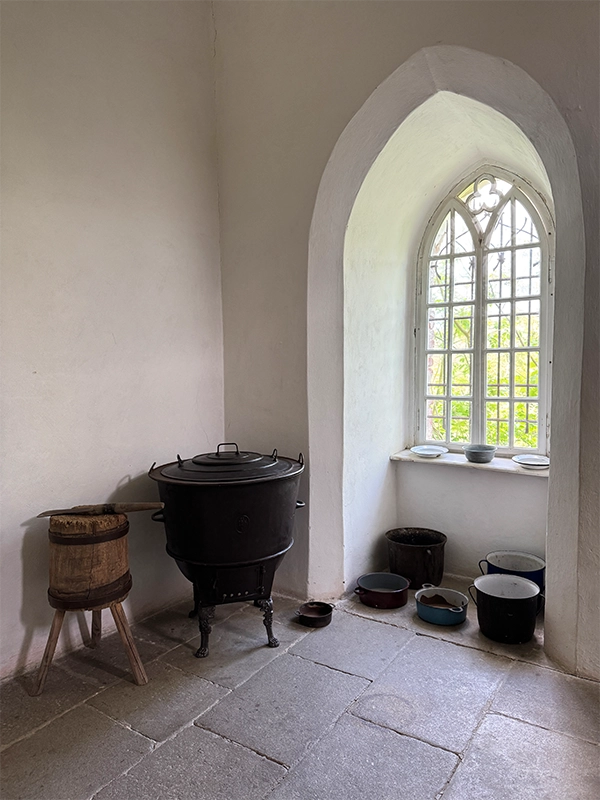
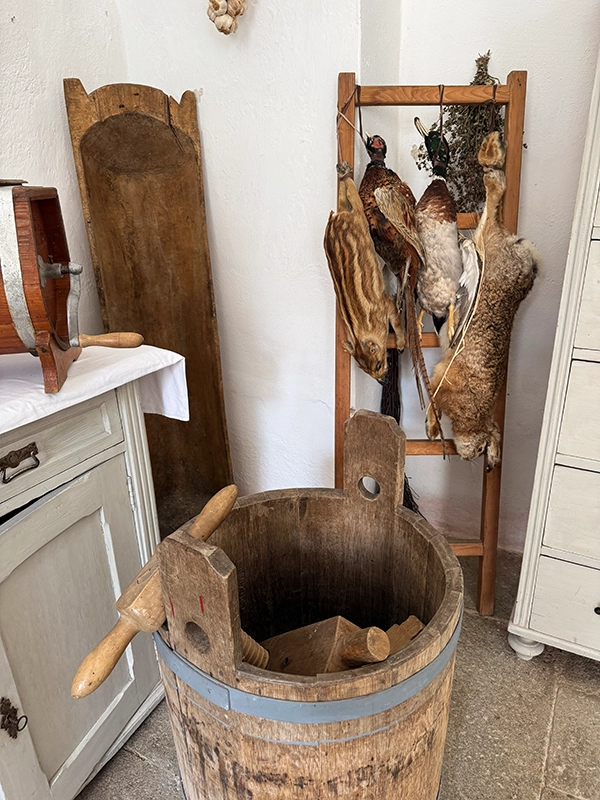


Castle garden & Zoo
Baron Jirí Julius Haas’ private Zoo was the largest of its kind at the time. It was open to the public for free on weekends and during special holidays (and the staff that was around made tips, by delighting the visitors with stories about the day to day life in the castle and their excentric employer), or on demand for a fee.
Back in the day a large number of aviaries were built, but only their foundations survived to this day. New ones have been built in their stead, although much lower in number. The zoo also had enclosures with guinea pigs and rabbits, among others, which were kept as food for other species of animals. Even ants! were displayed in the zoo. But the Barons favourite animal was a lioness which he bought as a baby from a circus. He named her Mietzi-Mausi (Mietz is the German equivalent to kitty and Mausi is a German cute-word for mouse), apparently after Disney.


FAQ about visiting Bitov Castle
We parked at Parkoviště hradu Bítov at 671 10 Výdejní místo Bítov. Although it is not officially connected to the castle itself (I think), it is the closest parking spot to it. They want 50 CZK in cash to leave your car there.
The tours are only available in Czech, but they have folders with descriptive texts for each room in a bunch of languages, including German and English (the ones I asked about, they had more).
No, you can only enter the castle with a tour guide. However you can enter the castle grounds and the remains of the zoo by yourself (with a ticket that costs 50 CZK).
Three tours are offered to visit Vitov Castle: The basic tour that covers most of the castle, the armoury and the last one titled “Castle prison, dungeon and torture”.
At the time I was there the basic tour (including admission to the castle grounds) was 200 CZK = 8€ per person. You can find the prices on their website for every tour.
As long as you aren’t there during the main season you’ll be fine just showing up without buying a ticket in advance. On the weekends there will be more people and during the week you might run into school classes.
Yes, you can pay by card or with cash.


